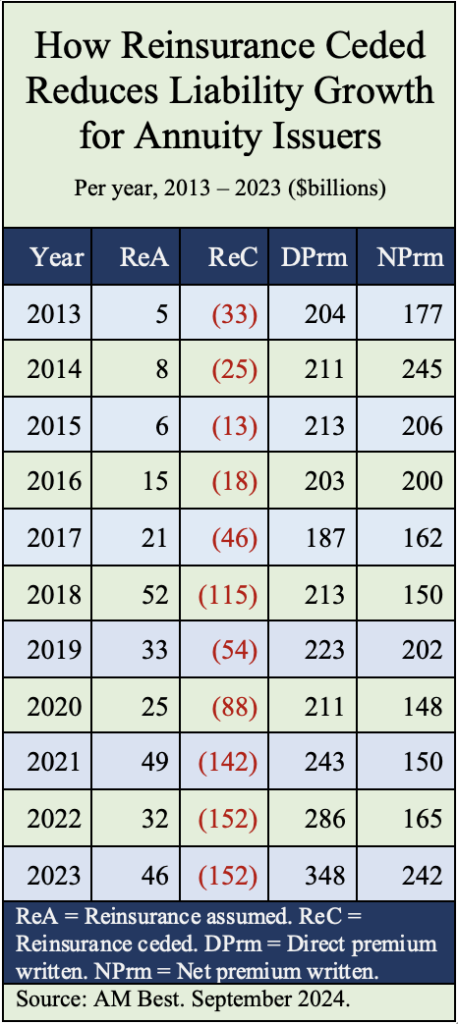
The economists Ralph Koijen of the University of Chicago Booth School of Business and Motohiro Yogo of Princeton University have been studying the finances of US life/annuity companies for the past decade, as the industry has adapted to low interest rates and tighter reserve requirements.
In a 2014 paper, “Shadow Insurance” (NBER Working Paper 19568), they documented the growing reliance of US life insurers on transferring capital-intensive liabilities to off-balance sheet affiliated offshore reinsurers to free up reserves and relieve pressure to raise prices on their products.

Ralph Koijen
One product class in particular—variable annuities (VA) with a guaranteed lifetime income benefit riders—has been both lucrative and problematic for life insurers. Collectively, life insurers—including Jackson National, MetLife and Prudential—currently earn annual fees on some $2 trillion in VA assets, according to Morningstar data.
But VA riders also carry market risks, longevity risks, and policy owner-behavior risks. These are expensive to hedge and require high reserves. Indeed, the costs of managing the liabilities associated with VAs has driven many life/annuity companies out of the VA business. Retail sales of VAs have declined steadily and outflows from VA contracts have risen in recent years, even as a rising stock market has driven up the total value of assets in in-force VA contracts.
Variable annuities are the subject of Koijen and Yogo’s latest paper, “The Evolution from Life Insurance to Financial Engineering” (NBER Working Paper 29030). They claim that managing “long-maturity put options” on the performance of the mutual fund assets in VAs has changed the life/annuity business in ways that demand new types of regulation.
“The minimum return guarantees change the primary function of life insurers from traditional insurance to financial engineering,” Yogo and Koijen write. “Life insurers are exposed to interest risk because they have not sufficiently increased the maturity of their bond portfolio or used derivatives to offset the negative duration and the negative convexity from variable annuities.
“Life insurers are also exposed to long-run volatility risk, which is difficult to hedge with traded options that are short term,” they add. “The presence of high leverage and risk mismatch makes life insurers similar to pension funds. However, the minimum return guarantees make life insurers different from pension funds because they are engineering complex payoffs over long horizons that are difficult to hedge with traded options.”

Motohiro Yogo
As a result, “The risk profile of life insurers has become increasingly complex and opaque over the last two decades because of variable annuities, derivatives, and reinsurance.”
To bring this conversation down from the stratosphere: The VA with a living benefit started out in the late 1990s as the perfect answer to the Boomer’s retirement income dilemma. They delivered guaranteed lifetime income without the illiquidity and low internal rates of return associated with traditional income annuities.
These products were particularly suitable for life/annuity companies that had demutualized and gone public. VAs gave them the high, transparent, predictable, fee-based revenues that pleased Wall Street analysts, not the low and slow corporate bond-based earnings of a mutual insurance company.
But the low interest rate regime and the tougher regulations that followed the Great Financial Crisis of 2008 blew up that seemingly perfect formula. The risks and costs associated with offering VAs shot up. Publicly held life insurers reacted in various ways—divestiture, reinsurance, new products, higher prices, and stingier guarantees.
The rest is history—written in part by Yogo and Koijen, who have migrated among various institutions over the last decade, including such capitals of financial research as the London Business School, the Minneapolis Federal Reserve, and New York University.
“In the early part of the sample before the 1980s, life insurance was larger than annuities,” their latest paper says. “Since the 1990s, variable annuities have grown rapidly and are now the largest liability. In 2017, variable annuities and traditional annuities together accounted for 4.9% of household net worth, which is about twice the size of 2.4% for life insurance. The label ‘life insurance companies’ was appropriate back in 1945, but they should perhaps be relabeled ‘annuity and life insurance companies’” in modern times.
© 2021 RIJ Publishing LLC. All rights reserved.


